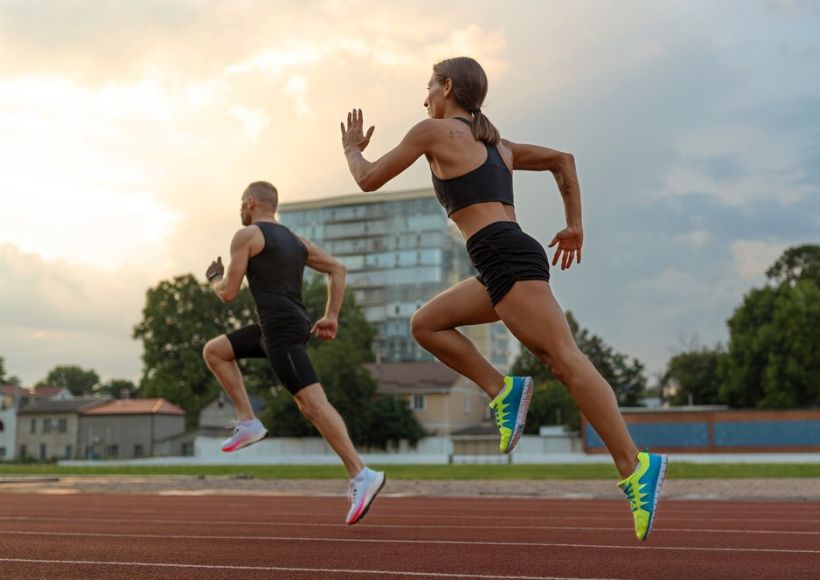Unleashing Your Potential: The Science Behind Athletic Conditioning and Performance
Welcome to “Unleashing Your Potential,” where we explore the fascinating science behind athletic conditioning and performance. Whether you’re a seasoned athlete or someone looking to enhance your fitness journey, understanding the principles of athletic conditioning can take your performance to the next level. In this blog, we’ll delve into the latest research and data to uncover the key components of athletic conditioning, explore the role of nutrition and training techniques, and provide practical tips for optimizing your athletic performance.
The Science of Athletic Conditioning:
Athletic conditioning is a multifaceted process that involves improving physical fitness, enhancing performance, and reducing the risk of injury. According to a study published in the Journal of Strength and Conditioning Research, athletic conditioning encompasses various components, including strength, power, endurance, agility, speed, flexibility, and coordination. Each of these components plays a crucial role in athletic performance and requires specific training strategies to optimize.
Nutrition for Athletic Performance:
Nutrition is a cornerstone of athletic conditioning, providing the fuel and nutrients necessary for optimal performance and recovery. Research published in the Journal of the International Society of Sports Nutrition emphasizes the importance of proper nutrition in supporting training adaptations, enhancing muscle recovery, and maximizing athletic performance. Key nutrients for athletes include carbohydrates for energy, protein for muscle repair and growth, fats for endurance and hormone production, and micronutrients such as vitamins and minerals for overall health and performance.
Training Techniques for Athletic Conditioning:
Effective training techniques are essential for developing the physical attributes required for athletic performance. High-intensity interval training (HIIT), for example, has been shown to improve cardiovascular fitness, increase anaerobic capacity, and enhance metabolic function, according to a study published in Sports Medicine. Other training modalities, such as plyometrics, resistance training, and agility drills, target specific components of athletic conditioning to improve strength, power, speed, and agility.
Recovery and Injury Prevention:
Recovery is an integral part of athletic conditioning, allowing the body to repair and regenerate tissues, replenish energy stores, and adapt to training stimuli. Research published in the Journal of Sports Sciences highlights the importance of adequate rest, sleep, hydration, and nutrition in promoting recovery and reducing the risk of overtraining and injury. Incorporating recovery strategies such as foam rolling, stretching, massage, and active rest can help athletes maintain optimal performance and prevent burnout.
Practical Tips for Optimizing Athletic Performance:
Here are some practical tips for optimizing athletic performance based on the science of athletic conditioning:
- Fuel Your Body: Prioritize nutrient-dense foods that provide the energy and nutrients needed for optimal performance and recovery. Aim to consume a balanced diet rich in fruits, vegetables, whole grains, lean proteins, and healthy fats.
- Train Smart: Incorporate a variety of training modalities to target different aspects of athletic conditioning, including strength, power, endurance, speed, and agility. Listen to your body and adjust training intensity and volume based on your individual needs and goals.
- Prioritize Recovery: Allow adequate time for rest, recovery, and recovery. Incorporate active recovery activities such as yoga, swimming, or cycling into your routine to promote circulation, reduce muscle soreness, and enhance recovery.
- Stay Hydrated: Hydration is key for optimal performance and recovery. Drink plenty of water throughout the day, especially before, during, and after exercise, to maintain hydration levels and support physiological function.
- Listen to Your Body: Pay attention to signs of fatigue, overtraining, or injury, and adjust your training accordingly. Rest and recovery are just as important as training, so listen to your body and prioritize self-care.
Conclusion:
In conclusion, unlocking your athletic potential requires a combination of science, strategy, and dedication. By understanding the principles of athletic conditioning, optimizing nutrition and training techniques, and prioritizing recovery and injury prevention, you can unleash your full potential and achieve peak performance in your athletic pursuits. Remember to fuel your body, train smart, prioritize recovery, and listen to your body’s cues along the way. With determination and perseverance, the sky’s the limit for what you can achieve.
Here are some statistics and data to support the points made in the blog, along with links to the sources for further reading:
Role of Nutrition in Athletic Performance:
Research published in the Journal of the International Society of Sports Nutrition emphasizes the importance of proper nutrition in supporting training adaptations, enhancing muscle recovery, and maximizing athletic performance.
Effectiveness of High-Intensity Interval Training (HIIT):
A study published in Sports Medicine found that high-intensity interval training (HIIT) can improve cardiovascular fitness, increase anaerobic capacity, and enhance metabolic function. (Source)
Importance of Recovery in Athletic Conditioning:
Research published in the Journal of Sports Sciences highlights the importance of adequate rest, sleep, hydration, and nutrition in promoting recovery and reducing the risk of overtraining and injury.
Nutrient Needs for Athletes:
According to the Academy of Nutrition and Dietetics, athletes have unique nutrient needs due to increased energy expenditure and physical demands. Key nutrients for athletes include carbohydrates for energy, protein for muscle repair and growth, fats for endurance and hormone production, and micronutrients such as vitamins and minerals for overall health and performance.
Injury Rates in Athletes:
According to a report by the Centers for Disease Control and Prevention (CDC), sports-related injuries are common among athletes of all ages and can range from minor sprains and strains to more serious fractures and concussions. Proper conditioning, training, and injury prevention strategies can help reduce the risk of sports-related injuries. (Source)
These statistics provide valuable insights into the importance of nutrition, training techniques, recovery, and injury prevention in athletic conditioning and performance. Feel free to explore the provided sources for more in-depth information on each topic.
We have tried covering Dietary Habits in our previous sections to show the impact of diet on health, and diet has direct correlation with Athletic performance.


